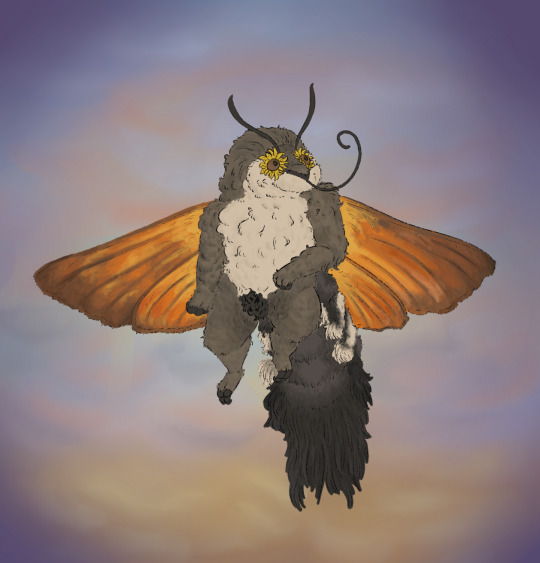#hummingbird hawk-moth
Text
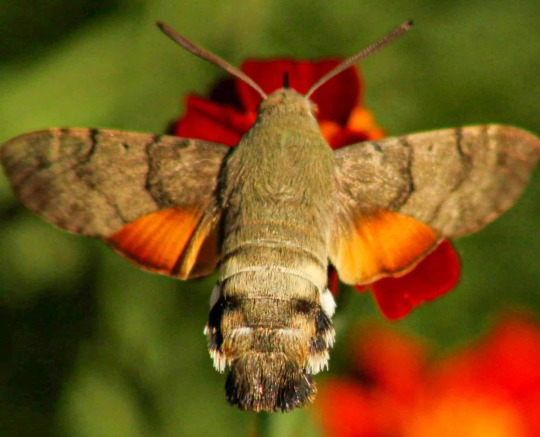
A hummingbird hawk-moth (Macroglossum stellatarum) in the Özalp district of Van, Turkey
Photograph: Anadolu Agency/Getty Images
#anadolu agency#photographer#getty images#hummingbird hawk-moth#moth#insect#macroglossum stellatarum#ozalp district#van#turkey#nature
42 notes
·
View notes
Text

Hummingbird hawkmoth! Gotta be one of the best insects of all time
108 notes
·
View notes
Photo


The time of the butterflies is gradually coming to an end - there were very few in my garden this year. But now a hummingbird hawk-moth showed itself briefly. I was just able to get my camera and take some photos. Most of them failed, but these two are presentable.
124 notes
·
View notes
Photo
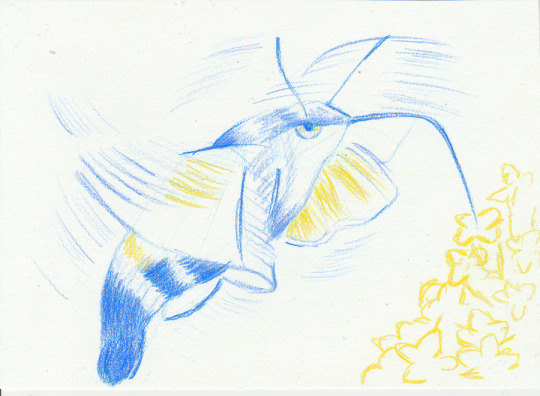



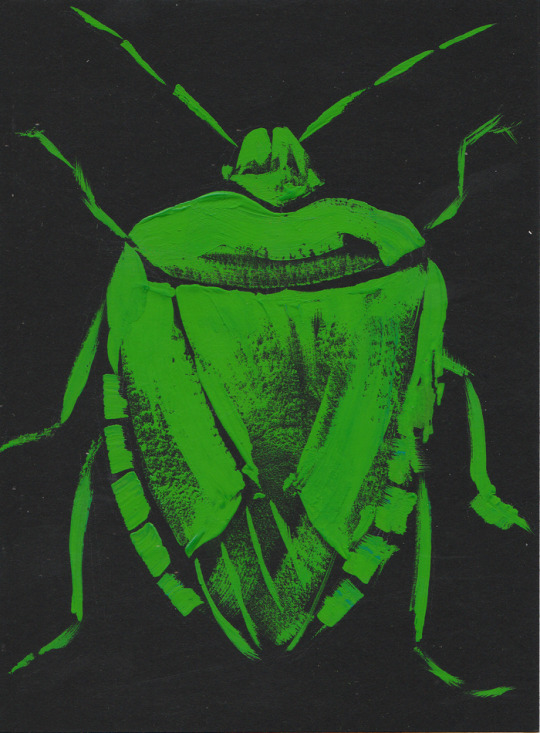


Part 3: bugs bugs bugs :D
“Why are three of these oddly similar-looking” because I... accidentally poured out too much green paint and didn’t want to waste it... So...
#so yes technically these three were done the same day#(so it's not a true daily challenge but shhh)#you know how you forget everything under stress? well please picture me frantically googling ''green bugs'' to try and salvage this#at way too late in the evening#which bugs are green help#they turned out pretty cool tho!! glad it wasn't yellow paint it would /not/ have shown as well on black paper#happy accident#mydrawings#insects#bugs#hummingbird hawk-moth#ant#firebug#beetle#stinkbug#praying mantis#ladybug#april drawing challenge
25 notes
·
View notes
Text
Yesterday I saw TWO humming birds in the backyard! One visiting the sage and the other one by the humming bird mint.
This morning we had another (possibly the same) humming bird at the sage again.
And this morning I saw a humming bird moth at one of my hanging baskets! They really do look like tiny humming birds! (I've never seen one in person before)
#text post#backyard wildlife#humming birds#humming bird moth#hummingbird hawk-moth#i really wish I could get a picture#but these little guys are so fast#by the time i get the camera opened theyre gone
13 notes
·
View notes
Photo


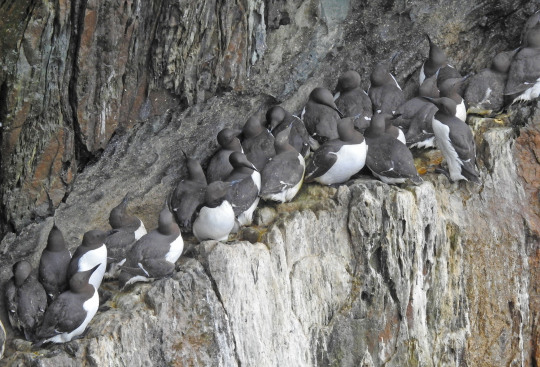




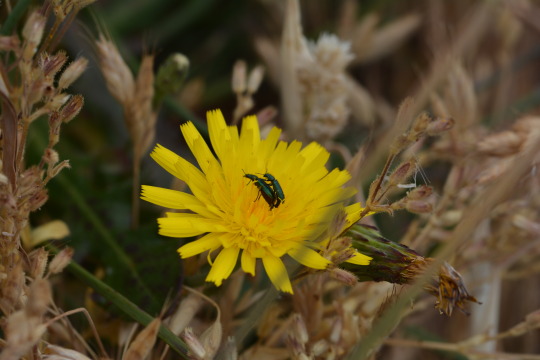


12/06/2023-RSPB South Stack
Photos taken here today in this set are of: 1. Chough, it was astonishing so see a decent handful of these energetic and ravishing scarlet billed crows as they picked at the grassy cliffs and dashed over our heads announcing themselves with their sharp and vibrant onomatopoeic calls as they went. An exceptional way to see my first of the year of this species, taking my year list to 205 just one behind last year’s total my highest ever, one of a few amazing experiences we’ve had with Choughs over the past few years at this sensational place for them. 2. Puffins, another red beaked bird I love so much that it was incredible to see well today. Four trips involving seeing Puffins in 2022 and 2023 makes me feel incredibly lucky and I never tire of seeing these iconic birds. 3 and 4. Guillemots and Razorbills, two more amazing seabirds it was wonderful to see packed tightly onto the cliffs, on the water and flying today. I love these birds and it was another splendid and immersive seabird experience today. 5, 9 and 10. Views at this beautiful spot. 6. Sheep’s-bit, an enigmatic and pretty flower that has been a star this holiday so far. 7. Some of my first centuary of the year, a smashing flower that I always like seeing. 8. Mating Swollen-thighed beetles.
Fulmar, Kittiwakes, Gannet, Raven, Magpie, Jackdaw on a strong corvid day, Stonechat, Rock Pipit, Pied Wagtail, House Martin, Common Blue butterfly, Red Admiral and Small Tortoiseshell were other highlights here. It was a strong insect trip here with a phenomenal Hummingbird hawk-moth seen fluttering through the air, my first Six-spot Burnet moth seen this year, an Oak Eggar moth caterpillar and exquisite views of a shiny Rose Chafer beetle our first ever. Stunning moments with Hairy shield bug seen too. Heather in flower as we’ve often seen here the great purple colour, honeysuckle, English stonecrop, chamomile, restharrow, purple sandwort and sea plantain again key finds so far this holiday, thrift and thyme including mixed well at one point and sea campion were key flowers seen here.
#puffin#chough#gannet#fulmar#guillemot#razorbill#auks#seabirds#birdwatching#uk#world#purple sandwort#sea campion#six-spot burnet#hummingbird hawk-moth#english stonecrop#sheep's-bit#flowers#rose chafer beetle#stonechat#cliffs#crow#house martin#pied wagtail#birding#south stack#anglesey#rspb south stack#wales#europe
13 notes
·
View notes
Text
A hummingbird hawk-moth, which can flap its wings upto 70 times a second
2 notes
·
View notes
Text


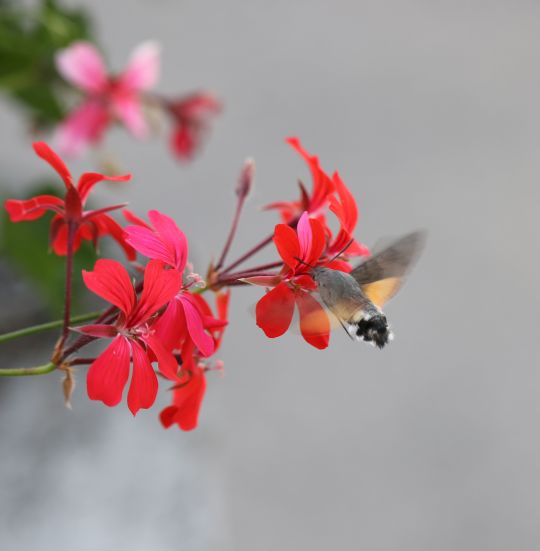
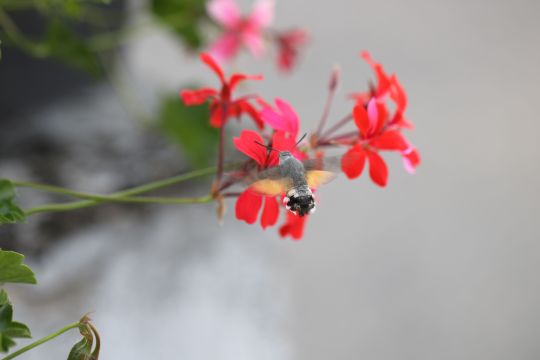
Taubenschwänzchen (Macroglossum stellatarum)
hummingbird hawk-moth
33 notes
·
View notes
Text
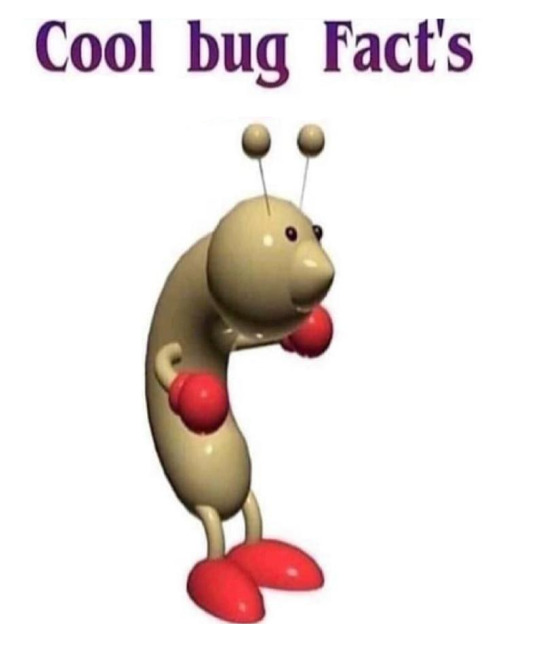
✨cool bug facts's✨
Macroglossum stellatarum, or the Bee moth/hummingbird hawk-moth! (Bee moth is their European name.)
They have the eye of Sauron. 👁
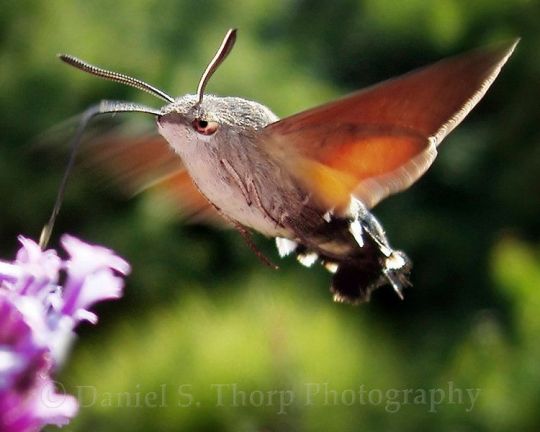
The anatomy of these cozening insects!!!
Immediately noticeable, they look like hummingbirds, and have fooled several people into thinking they are hummingbirds. This is actually because they evolved in an environment similar to that where the hummingbird evolved from, and they are actually unrelated. This is called homoplasy, or convergent evolution.
Uncommon for a moth, they don't have any sexual dimorphism in their antennae.
While the abdomen fluff on most moths is flat, theirs puffs out, giving the appearance of tail feathers.
Most species, if not all species, are smaller than the smallest species of hummingbird, the bee hummingbird.
Similar to hummingbirds, they can fly backwards. They are one of the few moth species able to do so.
Their larvae are called hornworms because they have a little horn on their rump. This horn is perfectly safe to touch despite its coloring, which is usually a purplish red, but will turn blue with an orange tip when they reach the last instar.
The eggs are a pale green color, as to match up with the buds of the Galium plant. The larvae are born yellow, and as they get older (usually) turn green, as to blend in with their surroundings, which would typically be the Galium plant. If their surroundings aren't green, though, they might take on a different color.
The larvae in some species also have these dots throughout their whole body that look like eyes, and when you reach the bump at the top of their head the pattern inside the dot is really tiny and it makes them look ravenous.
They on average produce 2 broods per year, but in warmer climates may be able to produce up to 4 broods.
Most of their senses are very weak, and they almost exclusively rely on their enhanced eyesight, as they are able to detect even the slightest movement and easily recognize things like plants and colors.
They can flap their wings 80 beats per second on average, whereas most species of hummingbirds can only flap their wings at 53 beats per second. The only hummingbird that can match their speed is the amethyst wood-star hummingbird, which has the world record for the fastest wing-beating out of any hummingbird species. And it should be noted that the amethyst wood-star can only flap their wings at 80 beats per second, 80 beats per second for the hummingbird hawk-moth is just what the majority are able to, with many species having much faster wing-flapping speeds.
Like hummingbirds, they make an audible humming noise when they fly.
Their wingspan is around 40 to 45 millimeters (1.6 to 1.8 inches).
They still fly around in extremally high temperatures where their thorax's temperature may get as high as 45℃ (113℉), this is the highest temperature that any other moth species can withstand, and is near the limit for when other insects muscles stop working.
The larvae move to the ground to pupate, usually to the base of their host plant or on dead leaves. Their pupae are a pale brownish color as to blend in with the ground.
They evolved to have colors that their predators can't see, rendering them practically invisible to these predators.
They are presumed to be able to fly at 5.3 meters per second, or 19.3 kilometers per hour (12 mph), based on the speeds of other moths in their genus.
Their proboscis is as long as their body is, hence why they keep it curled up.
Diet.
The use their proboscis to drink the nectar from flowers. They prefer longer flowers, such as honeysuckles, jasmine, buddleia (sometimes called butterfly bush.), primula, pansies, lilacs, verveine, echium, phlox, stachys, the flowers off of tobacco plants, and red valerians (Red valerians are sometimes called kiss-me-quicks).
The larvae eat the leaves off of honeysuckles, hawthorns, epilobium, chickweeds, centranthus, other species of the bedstraw family (such as coffea, which is the plant that produces coffee), tomato plants, and some species' larvae eat tobacco leaves. The fact that the larvae might eat their crops makes some farmers consider them to be a pest.
Behavior.
The females will lay up to 200 eggs each on an individual Galium. The reasoning for this is so that the larvae will have an easy meal when they first hatch, and won't have to share it with their siblings.
The reason they prefer longer flowers is because they know they'll have less competition from other nectar-eating animals, as only species with long proboscis' can drink the nectar from these flowers.
They can remember where particularly nectar-filled flowers are and tend to return to them everyday.
While they usually only fly during warm days when the sun is out, they have been spotted flying on rainy days.
After collecting their nectar, they return to the same spot everyday to rest.
When a male and a female spot each other, they begin to chase after each other, in what is essentially a game of tag, where they switch back and forth between chasing after the other and running away from the other, until eventually one catches up to the other and they mate.
Habitat.
They usually only stick around for the warmer parts of the year, but they are found all year round throughout Portugal all the way to Japan (by 'Portugal to Japan' I mean that the zones it inhabits all year round literally form a line that goes from Portugal to Japan). They are found throughout Europe, Asia, and Africa. They have occasionally been found in the United States, usually around Texas, California, and Utah. Because the Australians don't need to see them, I guess.
They prefer the heat and will usually live in tropical areas, but some species are found in much colder environments such as Alaska.
They prefer to live where there are lots of flowers, such as woodland edges and gardens, but may also live in coastal and suburban areas.
They usually overwinter (hibernate) in between the cracks in trees, rocks, and even buildings.
Cool facts's that didn't fit into these categories.
Not only are they called bee moths there, but they aren't even considered to be hawk moths in Europe.
Hummingbird moths are a different species from hummingbird hawk-moths, with the main difference being that hummingbird moths aren't as large due to the fact that they are sphinx moths rather than hawk-moths. They are a part of the same family, however.
The only reason that they're in the Sphingidae family is because their larvae were thought to look like sphinxes.
#bugs#insects#moths#moth#hummingbird hawk-moth#macroglossum stellatarum#bugblr#entomology#lepidopterology#cool bugs#cool bug facts#cool bug's#cool bug fact's
15 notes
·
View notes
Text
was able to take wonderful pictures of a hummingbird hawk-moth today 😭
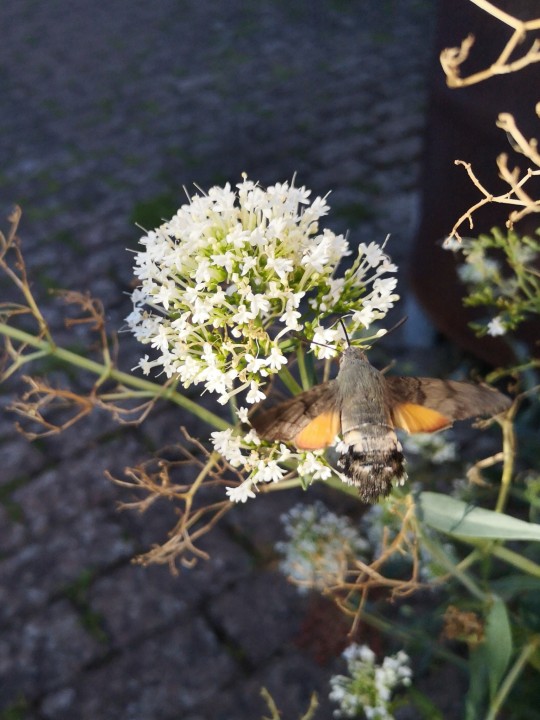



[ID: Four pictures of a hummingbird hawk-moth flying around & drinking out of a white flower. In the last three pictures its wings are blurry.]
#omggg I've never been able to get this close to one 😭#those fast beasts are always evading me :/#but this one was amazing 🎊🎉 10/10 would work with it again#it was a bit smaller than the ones I usually see? maybe it was still young and naive...#hummingbird hawk moth#bugs#hummingbird hawk-moth
14 notes
·
View notes
Video
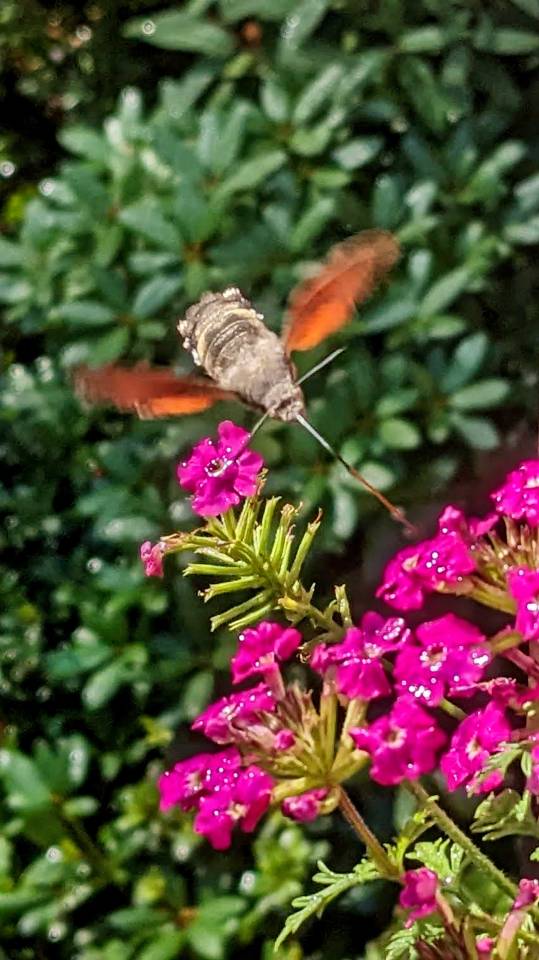
That is not a bird, it is a Hummingbird hawk-moth, which today visited the Verbena on my balcony and looked for nectar in every single blossom.
7 notes
·
View notes
Text
Also, yesterday I saw a hummingbird hawk-moth for the first time and I wish I took a picture
6 notes
·
View notes
Text

Hummingbird hawk-moth
0 notes
Text
Amazing creatures found in Japan: The hummingbird hawkmoth
Gorgeous shot of a hummingbird hawk-moth | Photo by Shawn Miller
I was just strolling down the road earlier this afternoon and something zooming here and there caught my attention. At first I thought it was the tiniest ever hummingbird, but once I was able to Google it, I discovered that it wasn’t a hummingbird at all, but rather a moth. I attempted to take a photo of it, but it was too fast for…

View On WordPress
0 notes
Text

From now on, I won't be captioning much, just to explain the picture or give fun facts.
So, this is a Hummingbird Hawk-moth (in Italian, my native language, it's called "Sfinge del Galio", which roughly translate to "Sphinx of Galio").
Can be quite scary if you don't know it's a moth, but highly fascinating
1 note
·
View note
